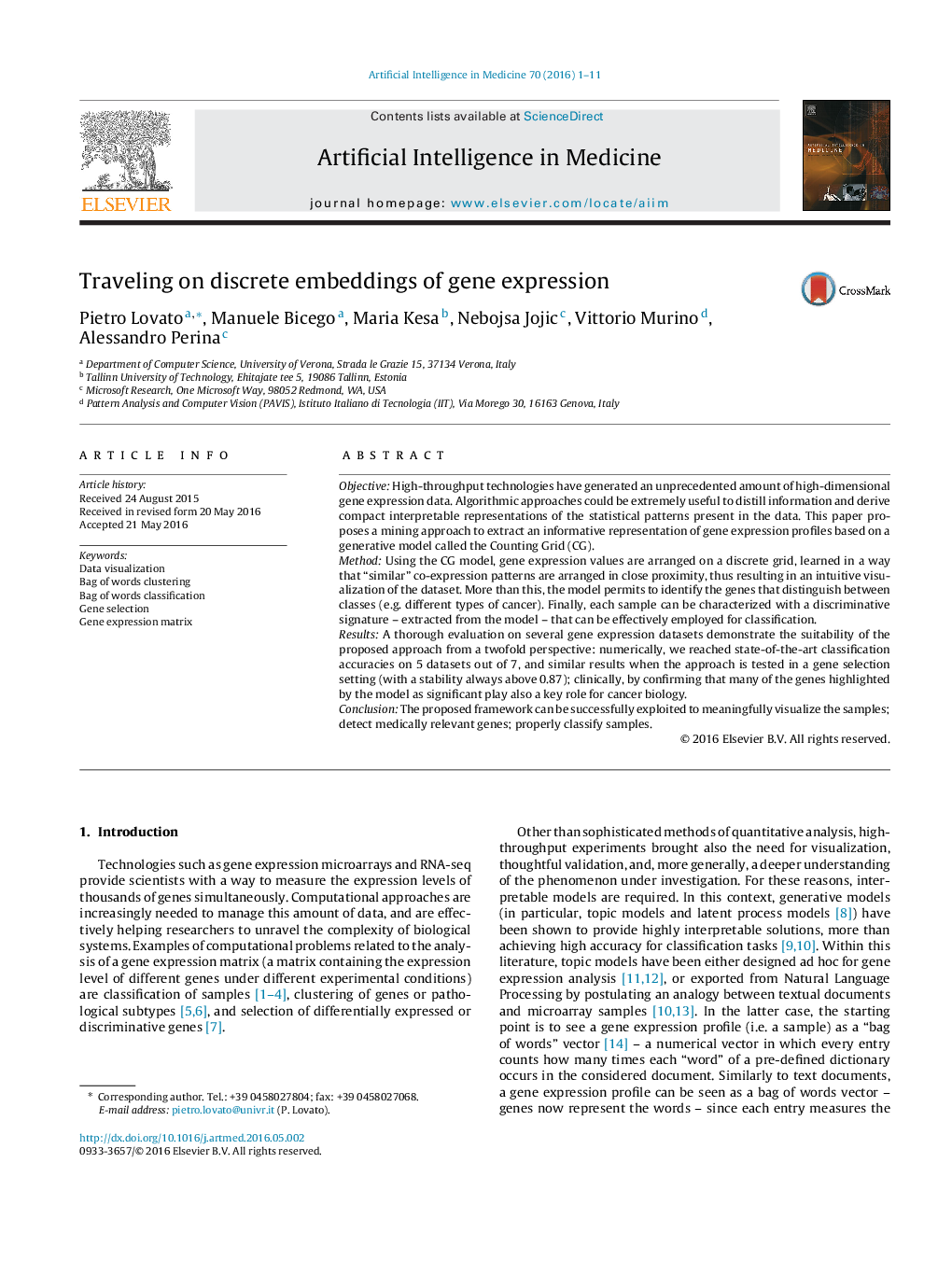| Article ID | Journal | Published Year | Pages | File Type |
|---|---|---|---|---|
| 377539 | Artificial Intelligence in Medicine | 2016 | 11 Pages |
•We comprehensively assess the counting grid (CG) model for gene expression analysis.•Similar expression patterns are visualized and arranged close on a 2D discrete grid.•The model permits to identify the genes that distinguish between classes.•Effective signatures can be extracted for clustering and classification of samples.
ObjectiveHigh-throughput technologies have generated an unprecedented amount of high-dimensional gene expression data. Algorithmic approaches could be extremely useful to distill information and derive compact interpretable representations of the statistical patterns present in the data. This paper proposes a mining approach to extract an informative representation of gene expression profiles based on a generative model called the Counting Grid (CG).MethodUsing the CG model, gene expression values are arranged on a discrete grid, learned in a way that “similar” co-expression patterns are arranged in close proximity, thus resulting in an intuitive visualization of the dataset. More than this, the model permits to identify the genes that distinguish between classes (e.g. different types of cancer). Finally, each sample can be characterized with a discriminative signature – extracted from the model – that can be effectively employed for classification.ResultsA thorough evaluation on several gene expression datasets demonstrate the suitability of the proposed approach from a twofold perspective: numerically, we reached state-of-the-art classification accuracies on 5 datasets out of 7, and similar results when the approach is tested in a gene selection setting (with a stability always above 0.87); clinically, by confirming that many of the genes highlighted by the model as significant play also a key role for cancer biology.ConclusionThe proposed framework can be successfully exploited to meaningfully visualize the samples; detect medically relevant genes; properly classify samples.
